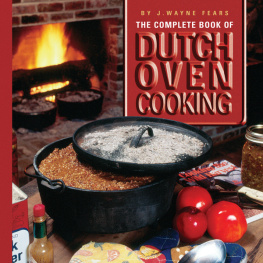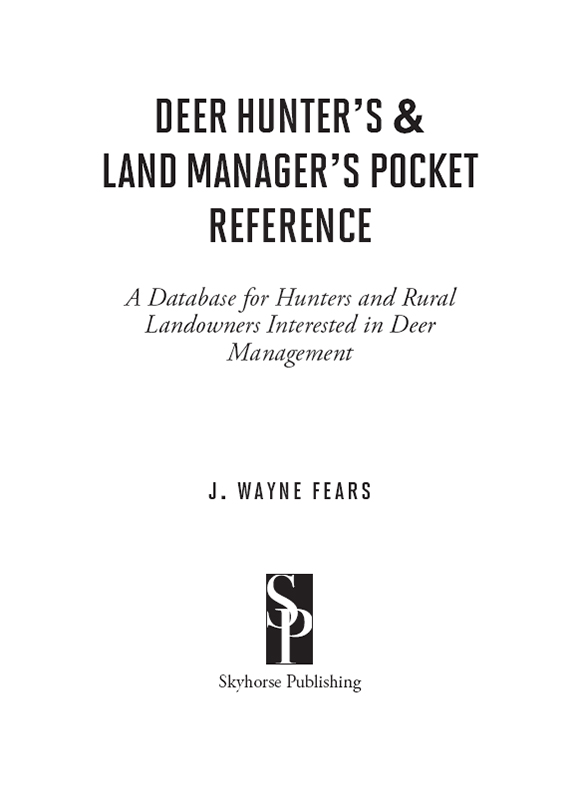Copyright 2010 by J. Wayne Fears Originally published in 2010 by Pro Tool Industries, Inc. First Skyhorse Publishing edition 2015 All rights reserved. No part of this book may be reproduced in any manner without the express written consent of the publisher, except in the case of brief excerpts in critical reviews or articles. All inquiries should be addressed to Skyhorse Publishing, 307 West 36th Street, 11th Floor, New York, NY 10018. Skyhorse Publishing books may be purchased in bulk at special discounts for sales promotion, corporate gifts, fund-raising, or educational purposes.
Special editions can also be created to specifications. For details, contact the Special Sales Department, Skyhorse Publishing, 307 West 36th Street, 11th Floor, New York, NY 10018 or . Skyhorse and Skyhorse Publishing are registered trademarks of Skyhorse Publishing, Inc., a Delaware corporation. Visit our website at www.skyhorsepublishing.com. 10 9 8 7 6 5 4 3 2 1 Library of Congress Cataloging-in-Publication Data is available on file. S. S.
White-tailed deer population when first Europeans arrived : 2334 million By 1900 300,000 Current 30 million Number of subspecies : 38total17 in U. S. and Canada and 21 from Mexico south to Peru Height at shoulders : 36 40 inches Buck weight (average) : 150 pounds, however it can range from almost 400 pounds in the far north to 50 pounds in the tropics. A buck may loose 25% of his body weight during the rut. Doe weight (average) : 100 pounds, 50 to 250 pounds depending upon where located Life expectancy : 3-5 years in the wild, 20 years in captivity Breeding date : October to February Doe estrus cycle : 21 to 29 days, recycle up to seven times Heat period : 24 hours Gestation period : 190 to 210 days Weight at birth : 4 to 8 pounds Sexual maturity, doe : 1 years. Under good nutritional conditions as high as 60% of 6-month old doe fawns will breed.
Sexual maturity, buck : 1 years Daily food intake : 4 to 6 pounds of food per 100 pounds of body weight. Food variety : deer feed on over 600 different varieties of plants in the U.S. Stomach : deer have four chambers in their stomach Water intake daily : average 1.5 quarts Home range : from 1 sq. mile to an elongated range that may be as much as 5 miles Glands : Seven external glands that are part of the communication system of deer 1. tarsal gland on the inner surfaces of the hind leg 2. interdigital gland between the hooves 4. preorbital gland in the corners of the eyes 5. preputial gland inside the bucks penile sheath 6. nasal gland inside the nostrils 7. forehead gland between the eyes and the antler bases Sense of smell : can detect a hunter from mile away. forehead gland between the eyes and the antler bases Sense of smell : can detect a hunter from mile away.
Their sense of smell is at least 10 times more acute than man. Also, they have a vomeronasal organ in the roof of their mouth which allows them to taste odors in the air. Eyesight : 310 degrees of vision around their head, can detect the slightest motion, excellent night vision. They can see more than black and white, as once thought, but can see a wide range of colors. Hearing : Large ears form sound funnels. Their hearing is several times greater than humans.
Attention span : deer have a short attention span, about 3 minutes. However they can be conditioned to react to human activity and even change their movement patterns. Hair : the hair on a deer is hollow giving it great insulating value Droppings : deer defecates about 12 times every 24 hours. Teeth : 32 teeth. They do not have front teeth on the upper jaw. Running speed : 36 miles per hour Jumping ability : 7 feet from a standing start, 8 feet with a running start.
Fawn spots : loses its spots at 3 months of age Fawn odor : fawns are odorless the first month of life Fawns are weaned at 4 months Rubs : a mature buck may make as many as 300 rubs on trees each fall. Older bucks usually make rubs first in the fall. Swimming : deer are excellent swimmers Vocalization : deer make at least 15 distinct vocalizations Antlers : are shed annually after the rut. New antlers are grown from late spring until early fall. Approximate annual U.S. annually : 1.5 million collisions cost in property damage $1.1 billion. annually : 1.5 million collisions cost in property damage $1.1 billion.
White-tailed Deer Subspecies U. S. & Canada borealis northern woodland white-tailed deer clavium Key deer, Florida carminis Carmen Mountains white-tailed deer, Texas & Mexico couesi Coues / Arizona white-tailed deer dakotensis Dakota white-tailed deer hiltonensis Hilton Head white-tailed deer, South Carolina leucurus Columbian white-tailed deer, Oregon & Washington macrourus Kansas white-tailed deer mcilhennyi Avery Island white-tailed deer, Louisiana nigribarbis Blackbeard Island white-tailed deer, Georgia ochrourus Idaho white-tailed deer osceola Florida coastal white-tailed deer seminolus Florida white-tailed deer taurinsulae Bulls Island white-tailed deer, South Carolina texanus Texas white-tailed deer venatorius Hunting Island white-tailed deer, South Carolina virginianus Virginia white-tailed deer Deer Management/Hunting Glossary of Terms Abomasum The fourth, or digesting, chamber of the stomach of a white-tailed deer. Biologist often use an abomasal parasite count as an index of deer condition and density relative to carrying capacity. Aerial photo An aerial view of a property for use in making land management decisions. Aerial photos are available for purchase from the NRCS and for free on-line viewing at www.msrmaps.com or www.googleearth.com.
Age class Deer in the same age range. Since deer are usually born in the early summer and harvested in late fall their ages are usually discussed by biologists in , 1 , 2 , 3 , etc. age class as they are aged when harvested. A 2 year age class buck is two and one-half years old. Albino Deer A genetic anomaly where deer lacks skin pigmentation. They have completely white coats, pink hooves and red eyes.
Antler The branched bony growth on the head of any animal of the deer family. They are shed and re-grown annually. Bawl A sound made by a deer that has been injured or scared. Bawls are given by deer of all ages in situations of distress and is an alarm call. Base camp The central or main camp within a hunting territory. Beam The main branch of an antler from which tines grow.
It is commonly called the main beam. Bed A place were a deer has laid down. A depression in grass or laves. Bedding Area Areas where deer take refuge. Bedding areas are often in areas that allow the deer to see and hear approaching danger. It is usually thick cover such as young planted pines, broom sedge fields, cane breaks, cedar swamps, or thickets of saplings and vines.
Bleat A sound made by fawns to stay in contact with their mother. This sound may also be made by disturbed fawns. Browse Twigs, forbs, and tender woody growth that deer eat when traveling in their territory. Brow tine The first fork of the antler on a deer. On trophy score sheets it is the G-1 tine. Buck A male deer.
Buck: doe ratio The ratio of bucks to does on a given tract of land. If a property has 20 bucks and 100 does the buck:doe ratio is said to be 1:5. If a property has 42 bucks and 126 does the ratio would be 1:3. Calling The hunting use of calls, imitating deer vocalizations, or rattling antlers to attract deer. Carrying capacity The number of deer a tract of land can support year-round. A carrying capacity of 1 deer per 20 acres means that it takes twenty acres of land to support one deer.















